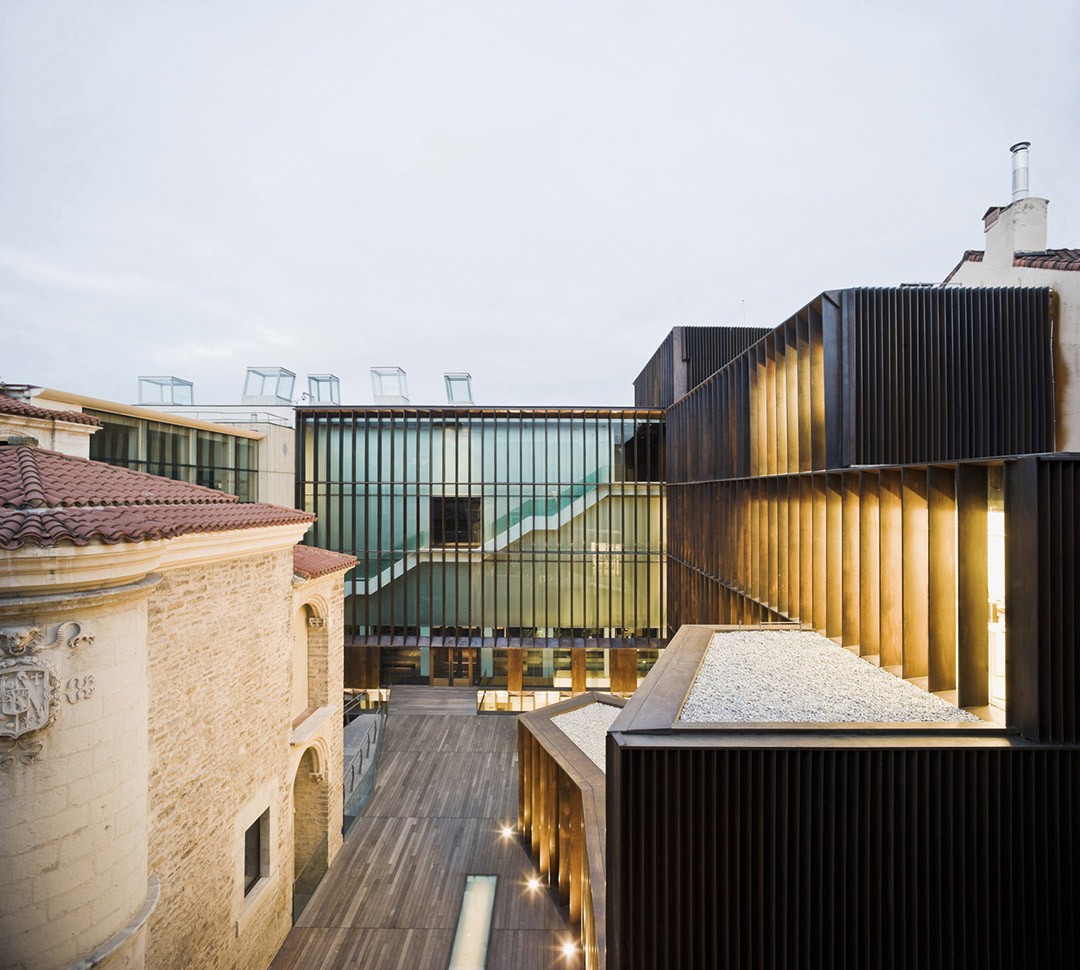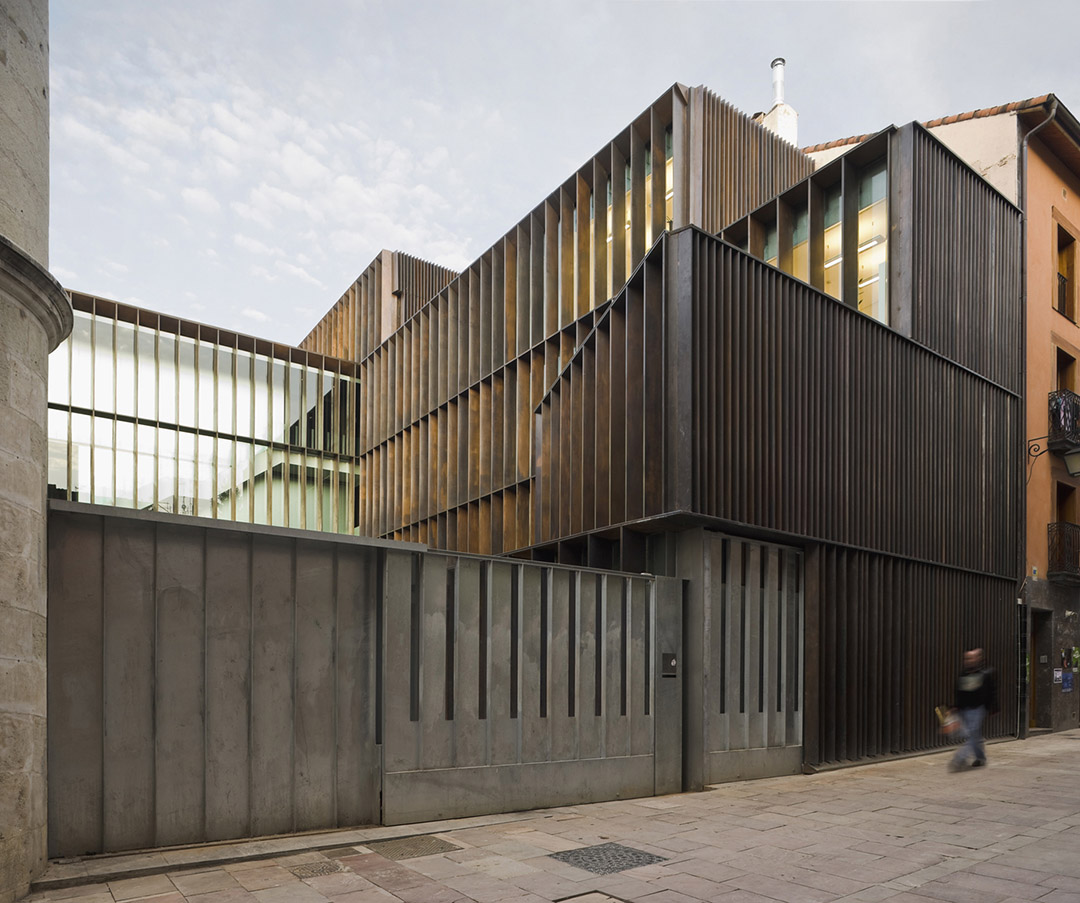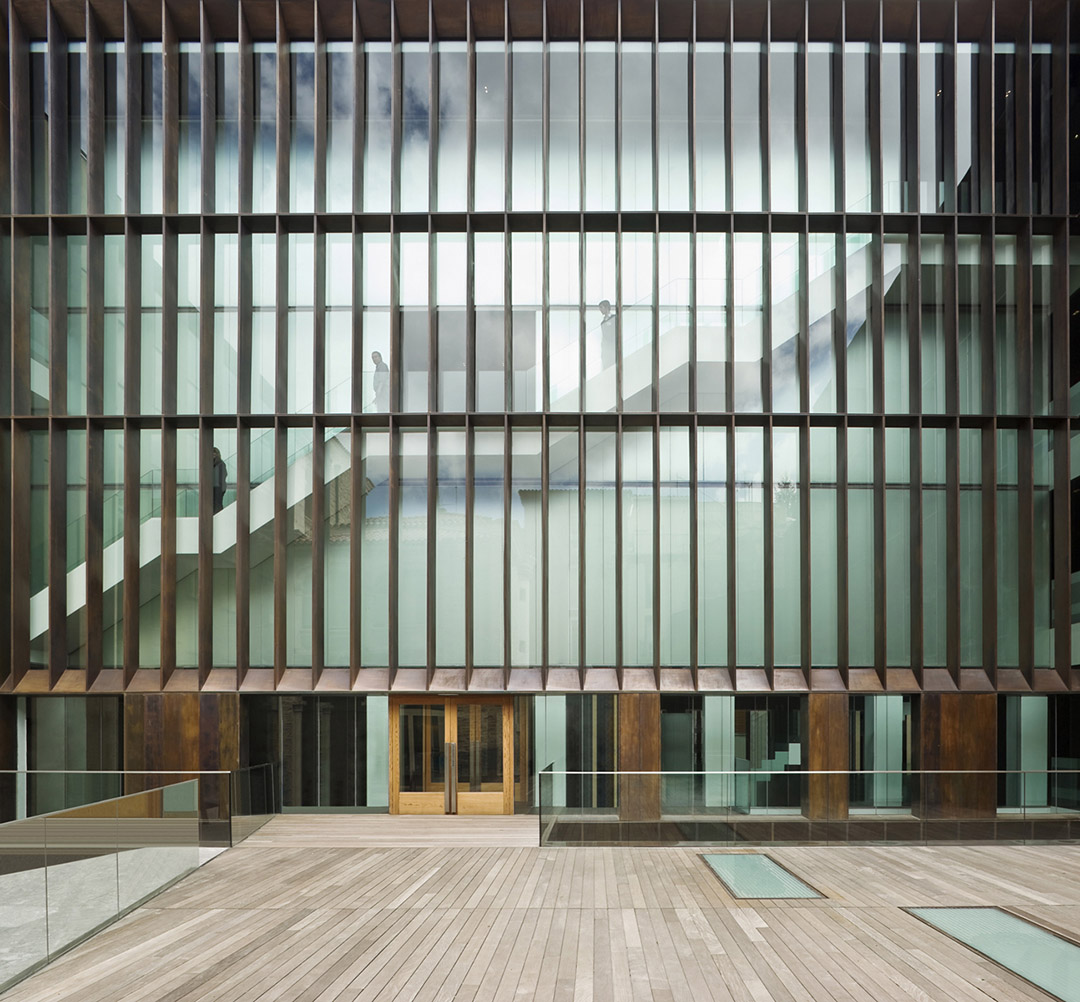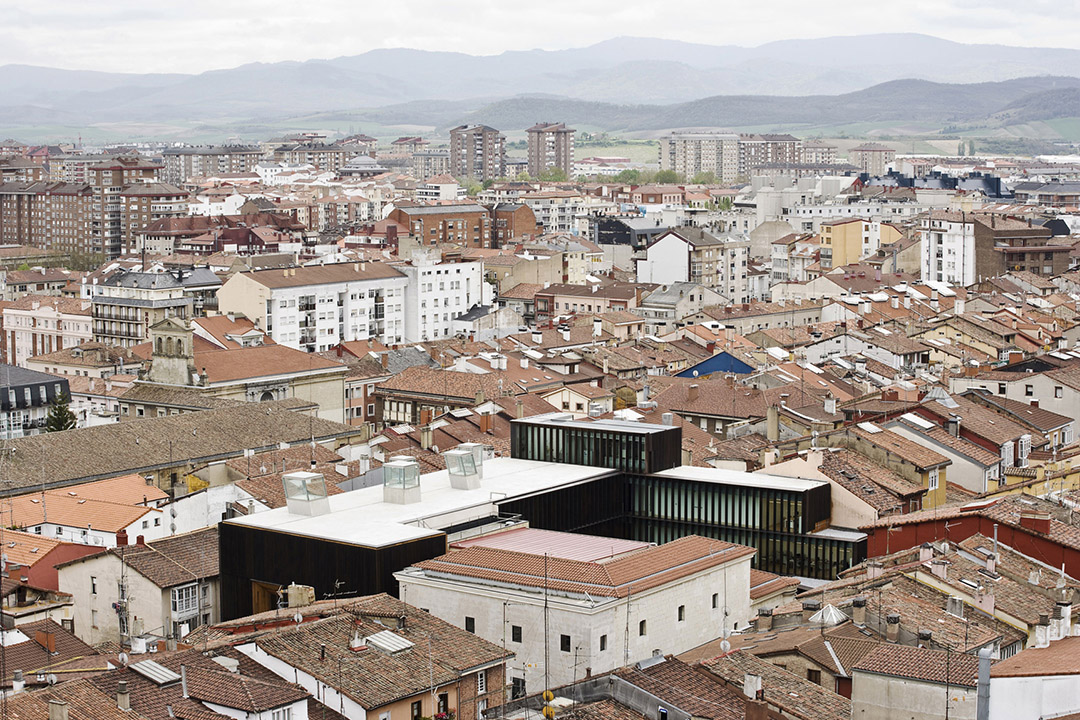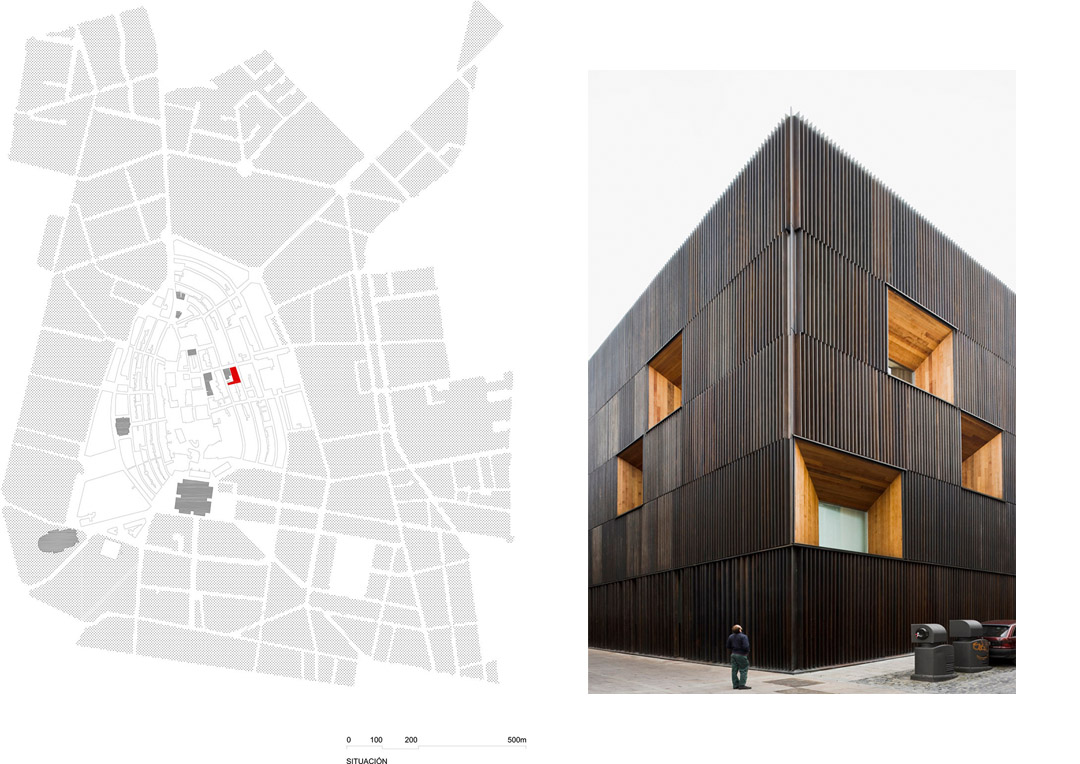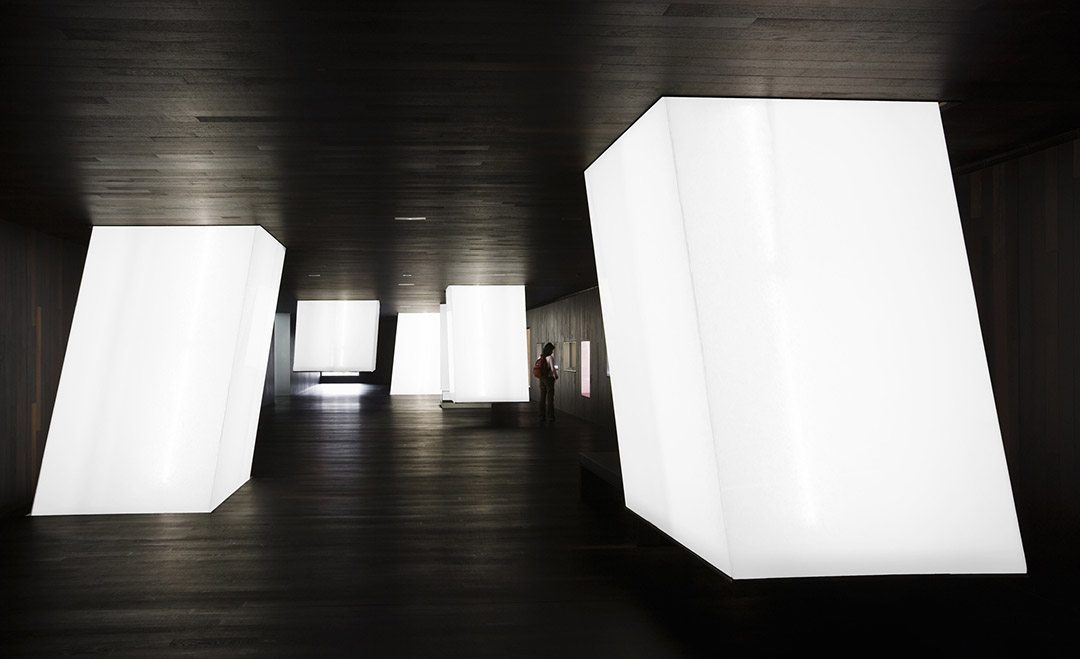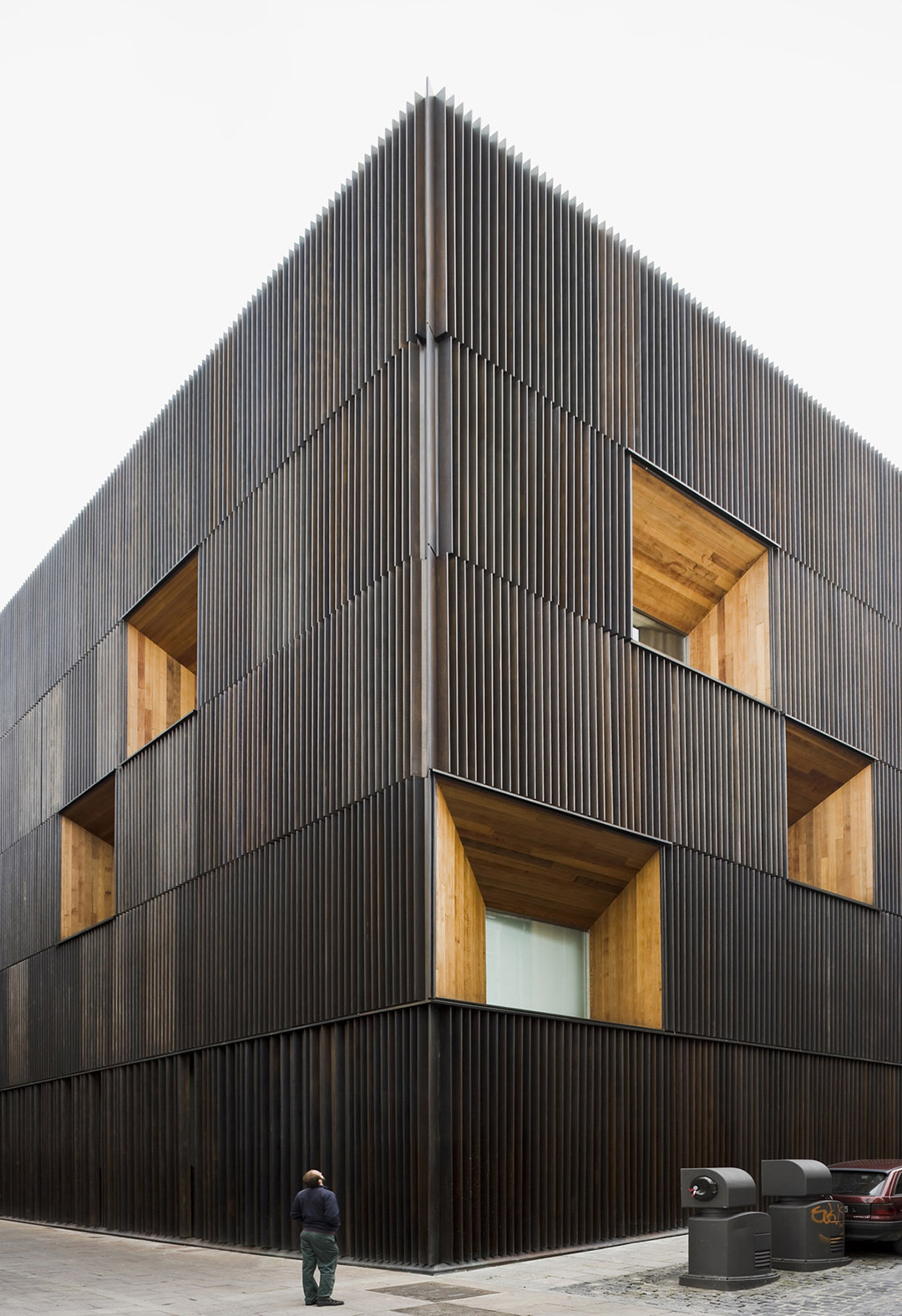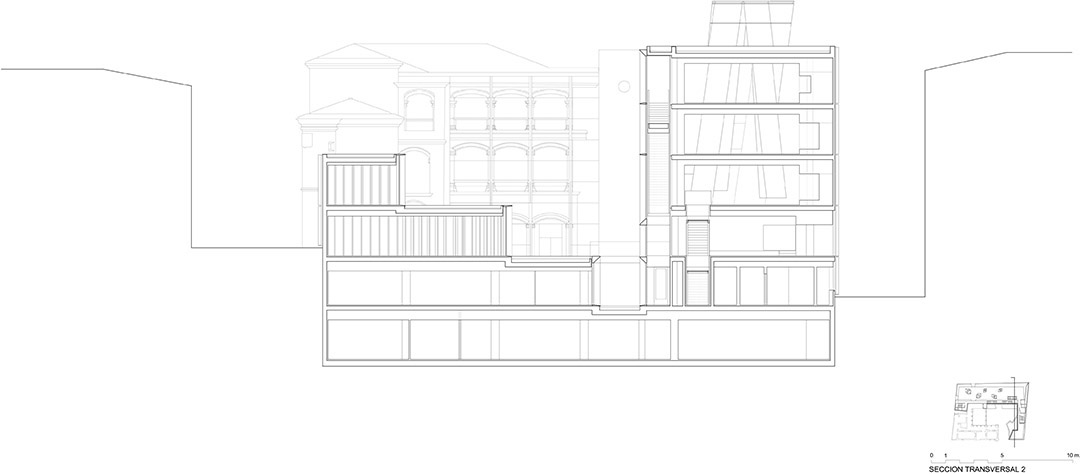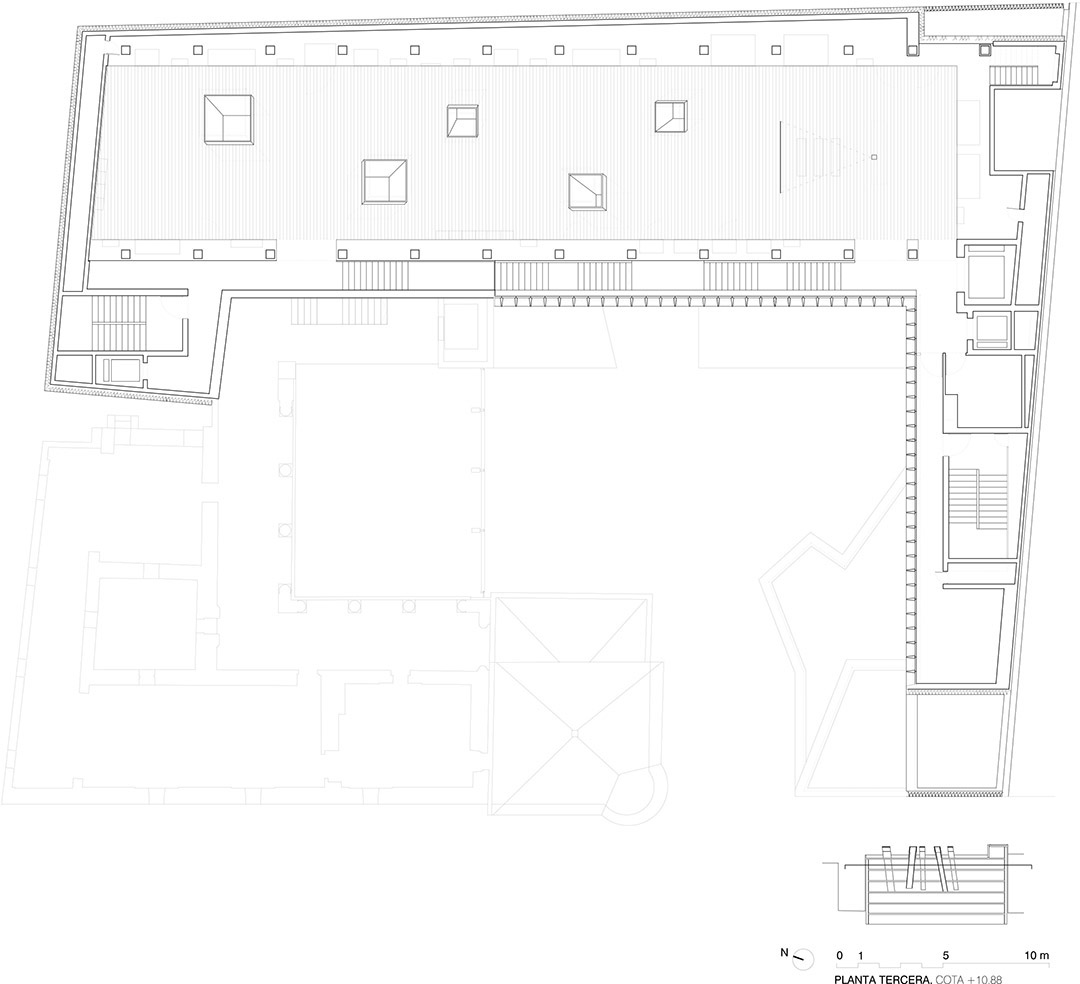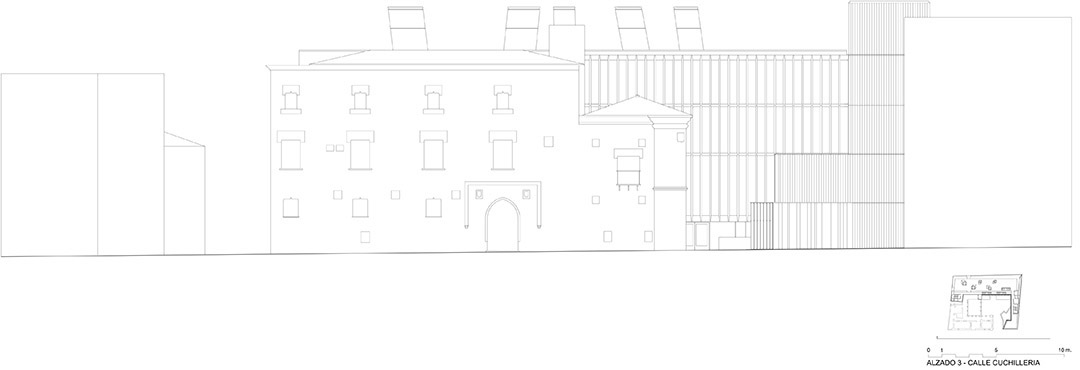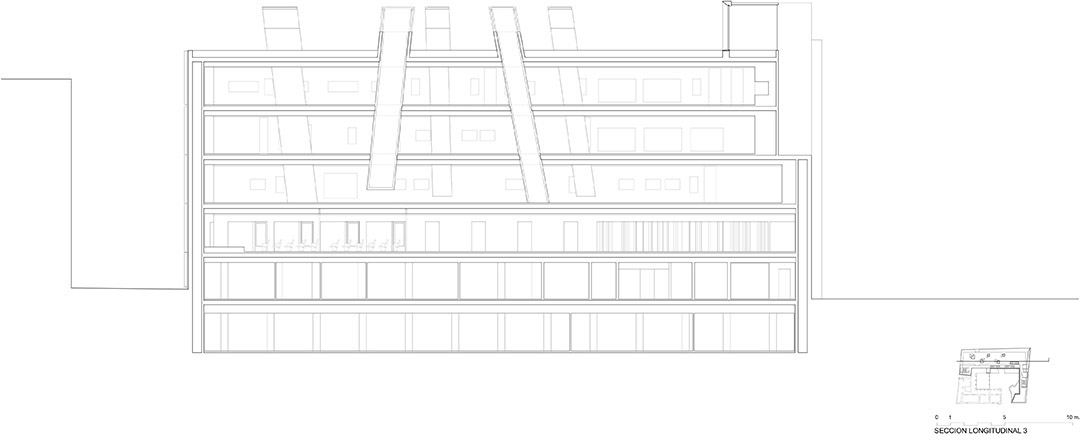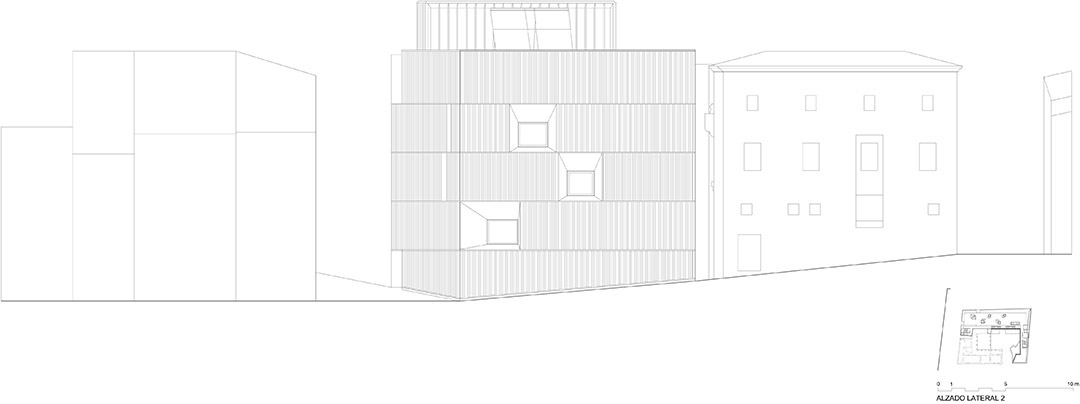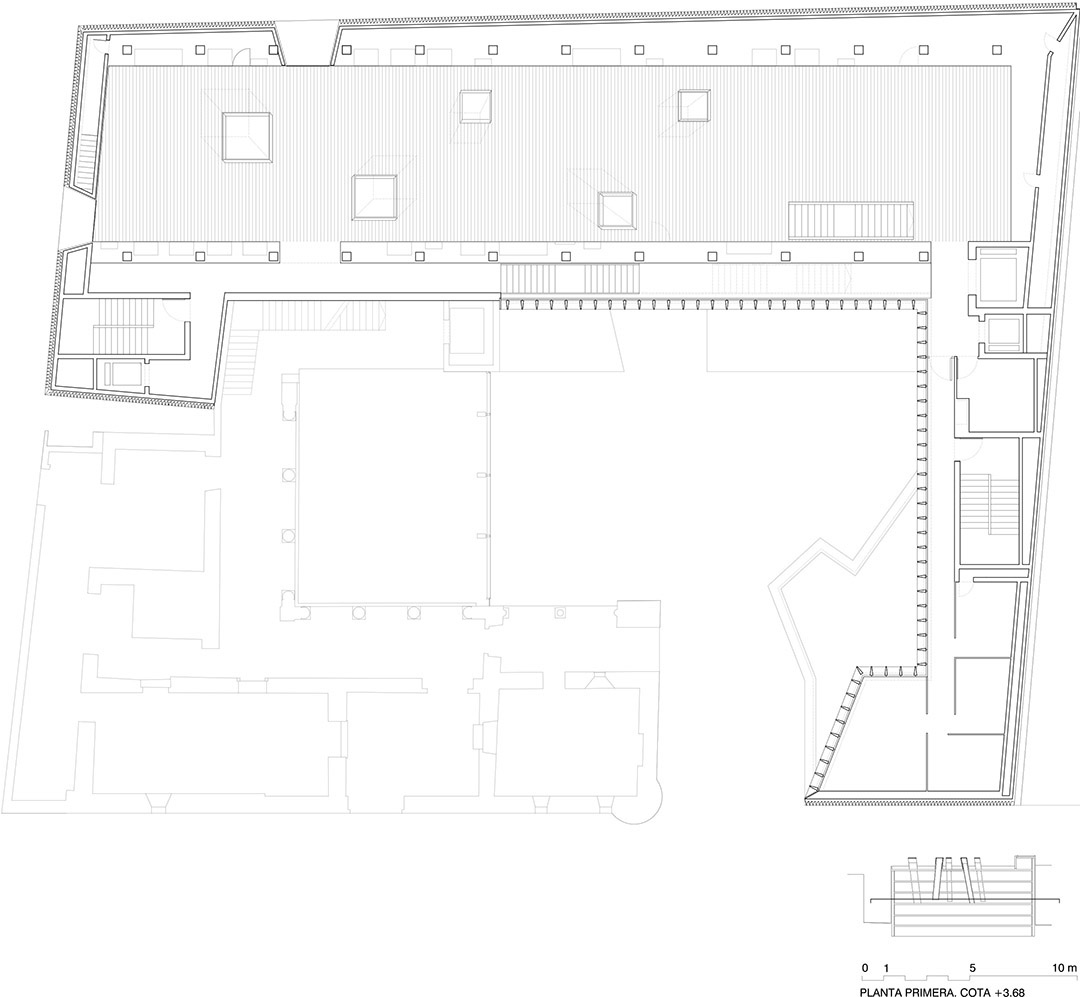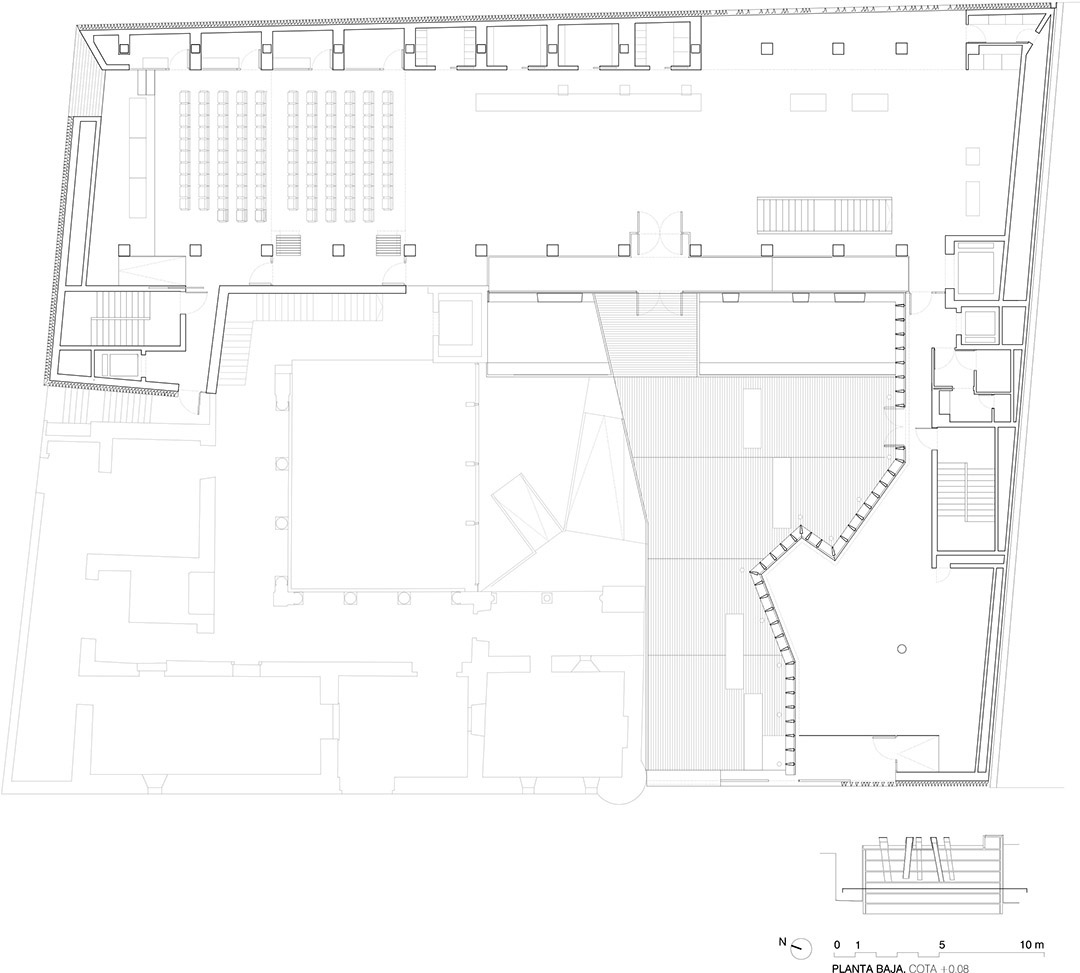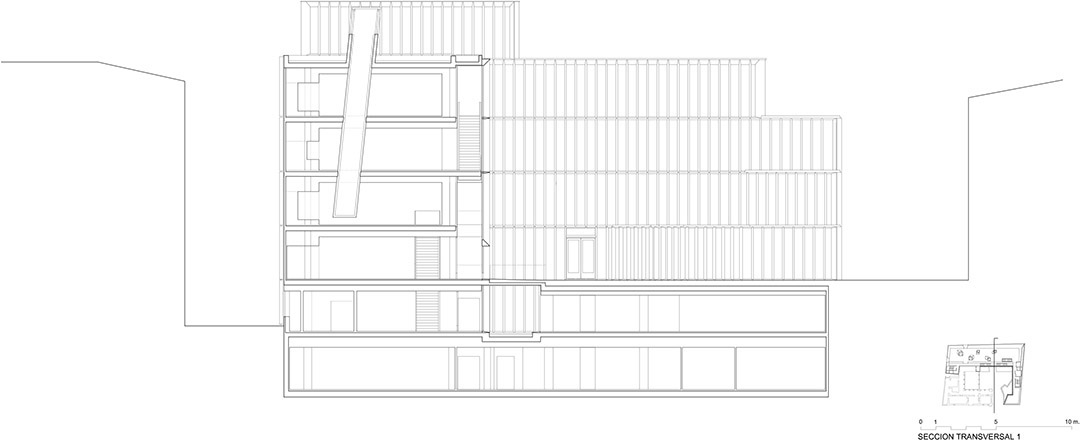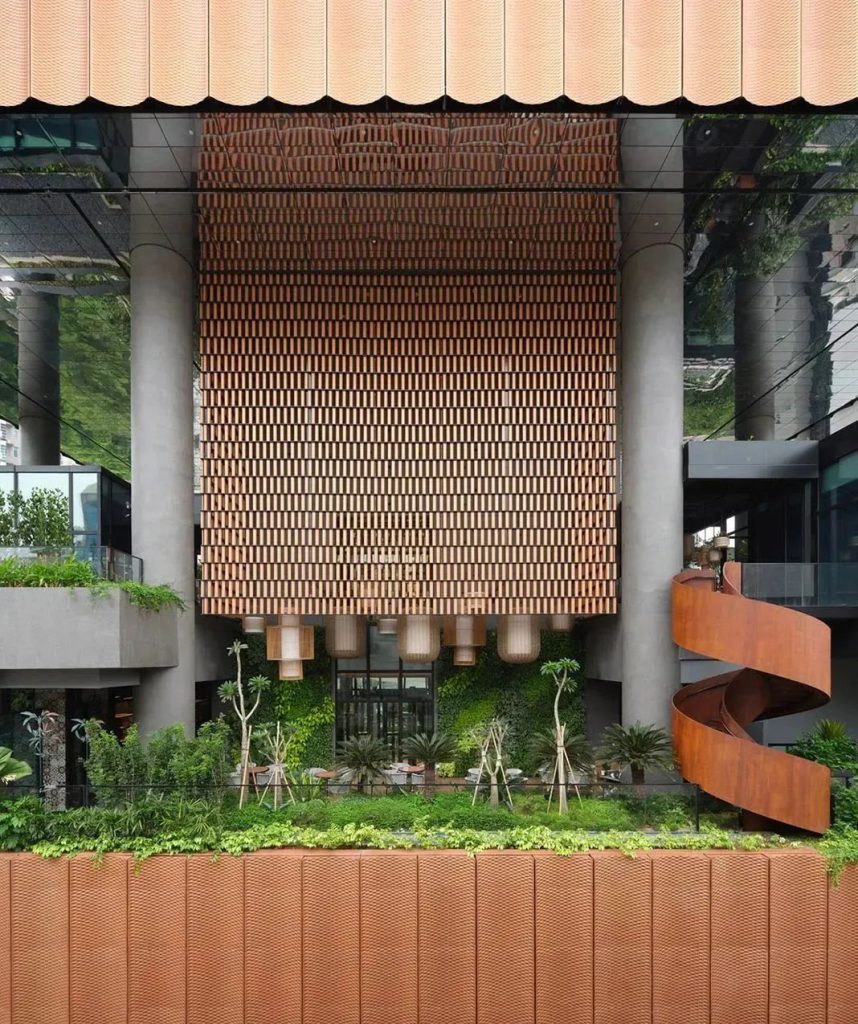考古博物馆犹如一个严密的珠宝盒子,里面珍藏着一件件历史交付给我们的珍宝。然而,事实中的历史,或者专家口中所谓“科学的历史”却并未留下多少想象的空间。我们希望历史呈现它自己的模样,并且永不消失。因为我们所知的历史,是由大大小小的发现拼凑起来的,是观察家希望看到的历史,而不是历史真实的样子。因此,尽管小珠宝盒外观紧密,内部却别有洞天。里面不仅仅是一个组成元素,也不仅仅是一栋高贵冷艳的建筑。它必须能唤起那时那刻的人物和场景,它是小而有韧性的陶瓷碎片,饱经风霜却留存了下来,诉说着时间的脆弱。
We like to think of an archaeology museum as a compact jewel box concealing the treasure that history has entrusted to us piece by piece. But not any kind of history, or at least not the scientific history of experts, which does not always leave room for imagination and almost always exhausts itself. We like to think of a history to call our own, and which never ends, because it lives on in each small or large finding, and in the eye of the observer, a whimsical eye that relies on what it wants to see, rather than on what it actually sees.For this reason, the small box, though dense and hermetic on the outside, must be suggestive and magical on the inside. The space within can be neither a mere organizing element, nor a beautiful but distant architecture; it must have the ability to evoke places andpeople from a tiny yet resilient fragment of ceramic which has managed to survive, and which speaks of the fragility of time.
在永久性展览厅里,表面的墙已经发暗,木地板和天花板也几乎变黑。这个建筑让我们感受到时间的流逝,和那一块块筑造起历史厚墙的土壤。但在这些黑色之间穿插着白色的釉面棱镜,环绕在展品周围,将屋顶光线引入内部。棱镜中嵌入展品的图案和描述信息,激发人们解读历史的兴趣。
In the permanent exhibition halls, all horizontal surfaces are dark, the wood floors are almost black, and the continuous ceilings black. This box evokes the passage of time, concentrated in the layers of earth that little by little have formed the thick walls of history. But these dark spaces are traversed by white glazed prisms – round which the exhibition of pieces is organized – that shall draw light in from the roof at daytime, and shall be inlaid with graphics and information to describe the items, evoking the adventure of interpretation.
博物馆邻近Benda?a宫,现如今的纸牌博物馆。经过通往Benda?a宫的庭院可以到达博物馆入口,可以一览项目的全貌。该项目旨在扩大庭院面积,升级入口区域,所以并不涵盖表面全部可用区域,只在一条垂直于主建筑的狭长小道上修建附加建筑。除了附加建筑项目以外,还要修建一个更吸引人的立面,代替目前与隔壁建筑共用的墙壁。由于场地倾斜,需要借助横跨花园的桥梁到达庭院,才能让光线进入地势较低的地方,否则地势低的一边无法接受到自然光。
The building adjoins the Palace of Benda?a, currently the museum of Naipes Fournier. Access to the building is through the same courtyard that leads to the Palace, allowing to grasp the full scope of the project. Aiming to extend the surfaces of the courtyard and thereby upgrade the access area, the proposal does not take up the whole surface available, only a narrow strip built as an appendix perpendicular to the main building and whose purpose, aside from housing auxiliary programs, is to offer a more attractive access fa?ade than that represented by the current party walls of the neighboring constructions. Because of the slope of the terrain, the courtyard is reached through a bridge over a garden that lets light into the lower areas, which would otherwise have no natural illumination on this side.
从功能上说,工作区,图书馆和工作坊都设置在一楼面朝着街道,且有独立的入口。礼堂和临时展品画廊位于与纸牌博物馆共用的公共入口层,永久性展览厅则设在楼上。楼梯连接不同楼层,使部分立面延伸至庭院。
Functionally the volume is organized so that working areas, as well as the library and workshops, are located at ground level oriented towards the street, and with an independent access. The assembly hall and galleries for temporary exhibitions are at the public entry level that is shared with the Naipes Fournier museum, whereas the permanent exhibition halls are in the upper levels. The stairs that link the different levels define part of the fa?ade onto the access courtyard.
外立面由多种性格外表皮组成。庭院的入口立面是青铜组件铸造的格栅结构,这种材料清楚地象征着对考古学的借鉴。中间墙采用双层丝网印刷玻璃,站在此处的楼梯上,你可以观赏庭院的美景。相比之下,地势较低的一边立面更为封闭,外层由不透明铸造青铜预制组件构成,必要处开口,内层由一堵厚墙组成,包含展览看台和系统。这样内部的展览空间不会受到阻碍,只有半透明的光棱镜从中穿过。
The enclosing walls are in fact multilayered spaces. The fa?ade defining the access courtyard is a grille of cast bronze pieces, a material with clear archaeological references; and in the middle, a double-layered wall of silkscreen printed glass contains the stairs which offer views of the courtyards as one steps up. In contrast, the fa?ade fronting the lower street is more hermetic, and is made of an outer layer of opaque prefab pieces of cast bronze, with openings where needed, and an inner layer formed by a thick wall containing the display stands and systems. In this way the internal exhibition spaces are unencumbered and only traversed by translucent light prisms.
项目来源: Francisco Mangado
